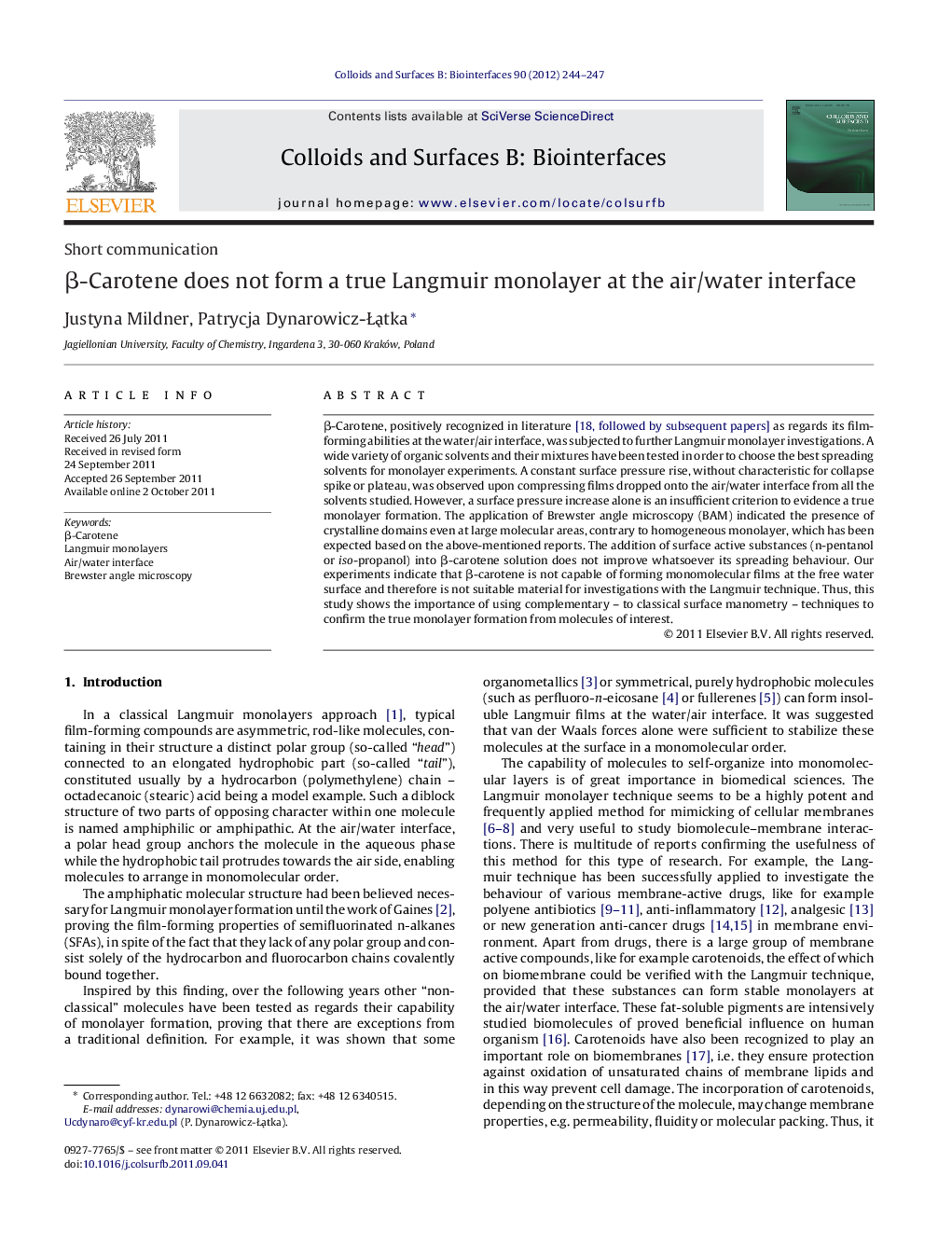| Article ID | Journal | Published Year | Pages | File Type |
|---|---|---|---|---|
| 600952 | Colloids and Surfaces B: Biointerfaces | 2012 | 4 Pages |
β-Carotene, positively recognized in literature [18, followed by subsequent papers] as regards its film-forming abilities at the water/air interface, was subjected to further Langmuir monolayer investigations. A wide variety of organic solvents and their mixtures have been tested in order to choose the best spreading solvents for monolayer experiments. A constant surface pressure rise, without characteristic for collapse spike or plateau, was observed upon compressing films dropped onto the air/water interface from all the solvents studied. However, a surface pressure increase alone is an insufficient criterion to evidence a true monolayer formation. The application of Brewster angle microscopy (BAM) indicated the presence of crystalline domains even at large molecular areas, contrary to homogeneous monolayer, which has been expected based on the above-mentioned reports. The addition of surface active substances (n-pentanol or iso-propanol) into β-carotene solution does not improve whatsoever its spreading behaviour. Our experiments indicate that β-carotene is not capable of forming monomolecular films at the free water surface and therefore is not suitable material for investigations with the Langmuir technique. Thus, this study shows the importance of using complementary – to classical surface manometry – techniques to confirm the true monolayer formation from molecules of interest.
Graphical abstractβ-Carotene spread from chloroform solution at the air/water interface.Figure optionsDownload full-size imageDownload as PowerPoint slideHighlights► The capability of β-carotene for Langmuir monolayer formation has been studied with surface manometry complemented with BAM images. ► A wide variety of organic solvents and their mixtures have been tested in order to choose the best spreading solvents, however, none of them resulted in homogeneous film formation. ► We prove that β-carotene, positively recognized in literature as regards its film-forming abilities, does not form a true monomolecular film at the air/water interface.
